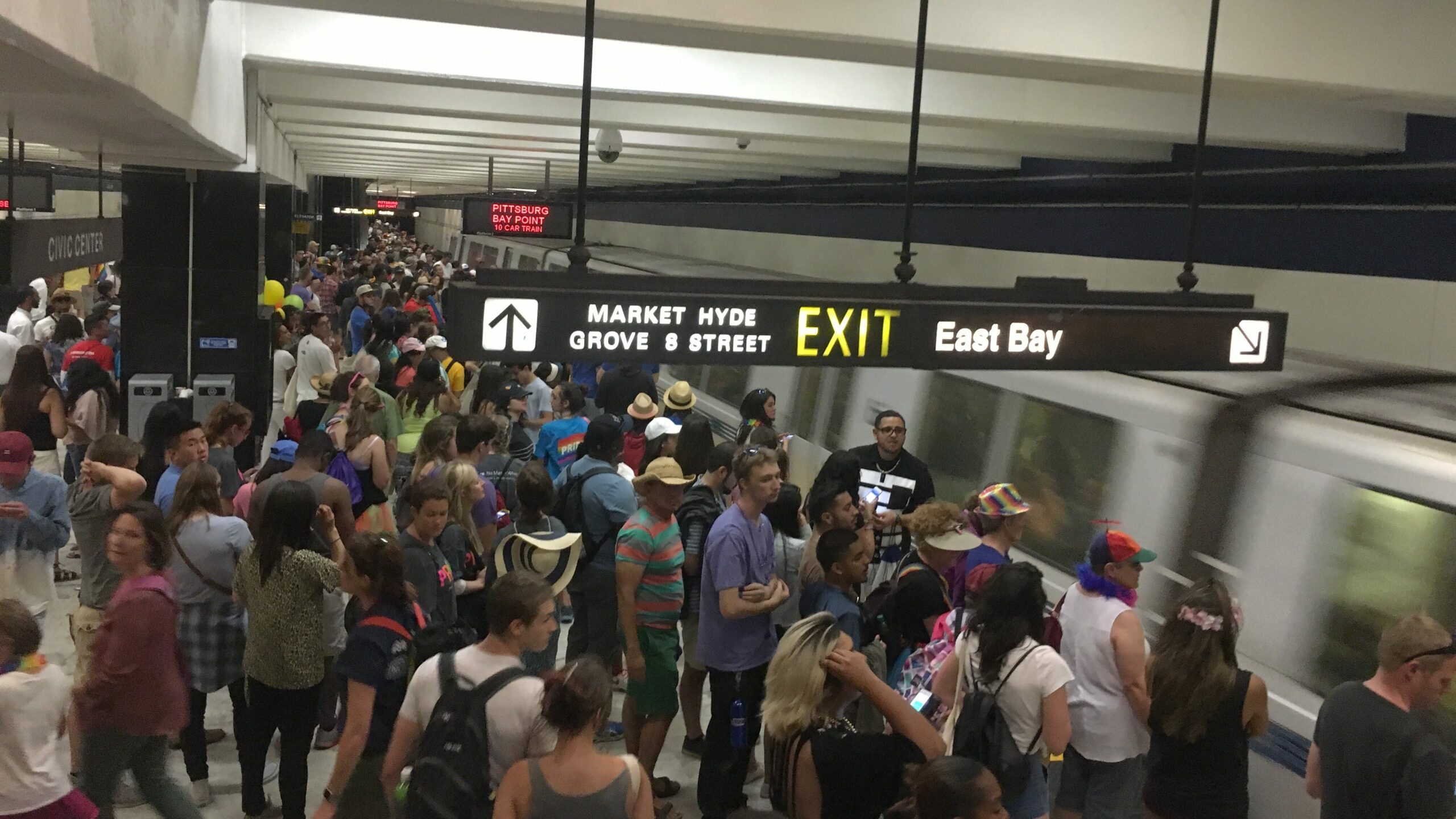California is hanging transit out to dry
California’s transit agencies are bracing for a fiscal cliff, a real threat facing communities nationwide. If left unresolved, it could lead to drastically reduced service, cutting people off from jobs and services. But California’s legislature is preparing to vote on a budget that will do nothing to stop it.
Update 6/14: Governor Gavin Newsom has released a new budget, which will keep CA transit agencies solvent in the short term.

What is a “fiscal cliff”?
We wrote about the transit fiscal cliff issue back in January, but here’s the gist. When the COVID-19 pandemic started in 2020, many people stopped riding transit, so transit agencies saw a massive drop in their fare revenues. Transit operations depend on fare revenue to operate essential services, so Congress approved two rounds of emergency funding to keep agencies operating through the pandemic. The plan worked—agency operating funds remained solvent.
But over the past couple years, as that emergency funding dried up, fare revenue has not recovered enough to replace it. Ridership has increased, but not at a fast enough pace to cover all the costs involved with transit operations. For many agencies, it’s only a matter of time before they run out of money and need to cut their services.
The fight to save transit in California
According to a survey done by the California Transit Association (CTA), 72 percent of CA agencies face fiscal cliffs. Earlier this year, hundreds of transit agencies and allied organizations asked for $6 billion over the next five years to prevent major service cuts and regrow their ridership base by improving service. They also suggested several ways that the state could fund such an investment.
While we would love to see California adopt a robust transit funding package like Minnesota just did to avert their own fiscal cliff, there are easier alternatives at California’s disposal. The options suggested by advocates could easily raise $6 billion without significantly impacting other priorities.
The governor’s budget disregarded all of their recommendations, instead shifting only $2 billion away from transit capital projects to cover operating costs. Lawmakers have pointed out that this move is the worst of both worlds—it will force service cuts by short-changing operating support and it will defund major construction projects, forfeiting federal support.
The consequences of this proposal would be catastrophic. San Francisco’s Muni system would need to cut at least 20 bus lines. Bay Area Rapid Transit (BART) would see “trains only once an hour, no trains on weekends, no trains after 9 p.m. on weeknights, reduced service to San Francisco International and Oakland International airports, some stations closed, and entire lines potentially shuttered.”
72 percent of transit agencies statewide would face similar cuts. Unless the state acts soon to rescue its transit agencies, millions of Californians will be left stranded, disconnected from education, medical care, food, and jobs—especially low-income people and marginalized communities.
Highway-transit double standard
Let’s take a step back from this debate to examine its premise. California spends around $21 billion a year on roads while providing a paltry $2.6 billion to the state’s transit agencies—a more highway-slanted ratio even than what the federal government allocates. There is a transit fiscal cliff, but no “highway fiscal cliff.”
So while California hems and haws over $6 billion in transit funding over 5 years, it is more than happy to spend tens of billions per year expanding highways, contradicting its own policy that acknowledges the futility of highway expansions and aims to reduce driving. Governor Newsom’s current plan would not only short-change transit operations, but also leave up to $6 billion in federal transit capital dollars on the table. Highways are rarely forced to make such choices.
California could temporarily transfer some of these highway dollars from highway expansion projects to patch this temporary gap in transit funding. The federal government makes it really easy to transfer highway dollars to transit projects, so why isn’t California doing this? Why are they making transit agencies choose between capital and operations when highways get both, carte blanche?
Promises broken
California Governor Gavin Newsom has sworn up and down that he is a champion of climate action and equity, but words are cheap. His decision to gut transit service betrays those values.
Transportation emissions are the greatest single contributor to climate change, and state governments have a responsibility to lower those emissions by providing high-quality public transit options. We know that gutting transit and increasing driving will increase carbon emissions, even if we go all-in on electric vehicles.
Gutting transit is especially contradictory to commitments on equity. Americans who are lower-income, Black or Hispanic, immigrants, or under 50 are especially likely to use public transportation on a regular basis, Pew Research Center data shows. Gutting transit hurts California’s most vulnerable communities. And at a time of historically high cost of living in California, this is particularly harmful and puzzling.
Transportation for America is intent on holding leaders accountable for the promises they make about transportation decisions. Minnesota is keeping their promises. California is not. Governor Newsom cannot credibly call himself a climate champion or claim to be addressing equity or cost of living challenges while continuing to defund transit. It is up to all of us to call him out for it.
T4A Director Beth Osborne joined Nick Josefowitz of SPUR to discuss California’s transit crisis on Volts. Listen to the podcast.




















1 Comment